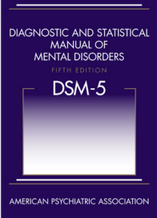 It was just delivered in the mail, my brand new copy of the DSM-5. After all the reviews and discussion, I don’t think there are surprises about what’s in it, so much as questions. Some questions are potentially life changing, like: “How will the changes impact diagnosis rates?”, and “Will support services change for those previously diagnosed?” (A pressing concern for the Asperger’s community.) Other questions are less crucial, but still important to many, like: “For how many years will people use terms like Asperger’s and ADD?” (Considering that ADD, as opposed to ADHD, wasn’t even in the 1994 version, my guess is these terms will be used for a long time, especially since Europe will still use the term Asperger’s. Still, I renamed my earlier incarnation of this blog from Coach for Asperger’s as soon as I heard what the APA was planning. Other terms were already working their way out of common usage, like Intellectual Disability replacing Mental Retardation, so the DSM-5 will just move things along.) The new DSM-5 does more than just update the mental disorder map, it seismically shifts the landscape, with ripples that impact treatments, services, insurance, and education. As an example, the new category of Social (Pragmatic) Communication Disorder is a vast unknown to clinicians like me, since I can’t predict how often I’ll see clients with that diagnosis, nor if it will be used extensively to re-diagnose those who no longer fit into other categories. Helen Tager-Flusberg, in the Simons Foundation Autism Research Initiative special report on the DSM- 5, wrote an interesting review of the history of Social (Pragmatic) Communication Disorder from a research perspective, while John Elder Robison, on his Psychology Today blog, takes his straight-forward and practical analysis and discusses the issue that “we need to make a decision about what services will support people with the new diagnosis. Otherwise we risk doing that population a great disservice – giving them a diagnosis that leaves them nowhere, with no indicated services or therapy.” Simon Baron-Cohen also raises the issue of services for those with SCD, but in general praises the new DSM for its combination of social and communication symptoms into one category, as well as the addition of severity levels and intellectual impairment specifiers for autism. Within the same special report, Ari Ne’eman talks about the advantages of merging Asperger’s, PDD-NOS and Autism Spectrum, and how they could result in more school and Medicaid services for those formerly identified with Asperger’s. But far beyond these practical matters, are people: individuals, families, couples, from supportive self advocacy groups, like ASAN and GRASP, to parents support groups in so many communities, and even to how a wife thinks about her own husband’s emotional processing. Personal stories will be different, because of the words written in a 947 page book. How will the new DSM-5 impact you? 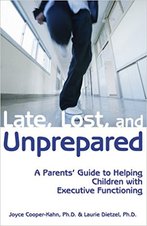 Late, Lost, and Unprepared: A Parents' Guide to Helping Children with Executive Functioning ,by Joyce Cooper-Kahn, Ph. D. And Laurie Dietzel, Ph. D. is, yes, another book on helping kids develop executive function. But that’s not necessarily a bad thing. Different books (several of which I’ve reviewed here) on the topic offer similar ideas, but the details vary and one book may work better for your child than another. The first part of Late Lost, and Unprepared thoroughly explains executive function, breaks executive function down into a list of specific skills, and discusses the developmental aspects of executive function. If this is the first book you’ve read about helping your child, it’s certainly worth the time to read this carefully. The second half of the book, “What You Can Do About It”, is of value even to those who have read a number of other books on the topic of executive function. This book’s strength is in breaking issues down methodically. As a former engineer, I know that the best way to get to a solution is to deal with a series of simple issues, rather than one overwhelming problem. This book helpfully lists very concrete, specific issues for each category of executive functioning. For example, one chapter about impulse control addresses specific problems like interrupting others, hitting others, and running off in stores. A strength of this approach is that the authors present both short term and long term solutions. This is what every parent needs to remember, that executive skills improve with growth and maturity. While short term solutions stop disasters from happening, longer term solutions are what will be truly valuable to maturing individuals. Another strength of the book is that it discusses how parents can advocate for their child. It’s ideal for every child if all the people dealing with him can be working toward the same solutions. This book makes that idea straightforward and easy to figure out. 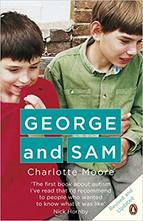 I review many books on this blog, mostly because I love to read, and I want to share those books that I find compelling or interesting. There are many books written by parents, chronicling their personal journeys of raising autistic children, and I’ve read and enjoyed a lot of them. But, after so many examples, I’m now looking for these first person accounts that bring something a bit different to the reader. George and Sam, Two Boys, One Family, and Autism , by Charlotte Moore, 2006, is just that book. The author discusses her life with her two autistic son, George and Sam. With two sons, there’s plenty of opportunity to explore how one diagnosis can be both the same and different in two individuals. With the addition of Moore’s youngest, neurotypical, son, Moore has even more room to consider just how autism and personality intersect. One area where Moore excels is in examining how her autistic children play and deal with the world of imagination and fantasy. Her precise attention illuminates just how autistic play can differ from neurotypical play with the same toys. Moore was already an author and journalist before the publication of this book, which is based on her column about her sons. Because of this daily examination, Moore seems to write from a present tense noticing, rather than looking back and trying to remember just how her boys behaved. Throughout the book, Moore maintains her humor and obvious affection for her sons. We don’t just hear about how she enjoys her children, she clearly demonstrates it on every page. The GRASP newsletter, one of the best sources of information on any autism topic, recently published an excerpt from the the newest edition of this book, where Moore revisits her life with her now grown sons. This is a repost of a popular post that wasn't opening correctly. Rather than spend a lot of time troubleshooting, I'm just moving the post. I remember learning in grad school that the very things that attract a couple to each other in the beginning are the things that draw them apart later on. Perhaps nowhere is this more true than the marriages between neurotypicals and those with Asperger’s. In my last post I discussed Gina Pera's Is It You, Me, or Adult ADD, the classic text on marriage to a partner who has ADHD. In my upcoming posts, I’m going to discuss two other books, Loving Someone With Asperger’s Syndrome , by Cindy N. Ariel, Ph.D. and The Journal of Best Practices , by David Finch. Both of these books cover the topic of marriage between a neurotypical and an individual with Asperger’s or an autism spectrum disorder. The Asperger’s/neurotypical marriage is probably even more challenging than an ADHD/neurotypical marriage. In both cases, the couple is coping with differences in their basic ways of dealing with the world, and differences in neurobiology. However, Asperger’s also, by definition, involves social differences, and marriage is, at its core, our most social relationship.
There’s been a lot of controversy in the autism community about the tendency to scapegoat the Asperger’s partner for all of the relationship difficulties. Maxine Aston put forth her theory, not backed up in the peer reviewed literature, which she calls Affective Deprivation Disorder, where the neurotypical partner suffers due to emotional deprivation. Although, of course there is truth to the idea that the partner may be suffering, the autistic blogging community understandably had a lot of criticism about the idea of the syndrome. Certainly, in troubled couples, both the neurotypical partner and the ASD partner are suffering. I think a healthier option toward helping these couples might be to step away from blame and expecting one partner to do all the adapting, and instead focus on improving understanding and communication between both partners. After all, neurotypical partners choose their ASD spouses deliberately, often due to the very strengths that come with the ASD diagnosis. The two books I’m next reviewing both can help couples move toward that direction, but in very different ways. (Note, check out my earlier posts for Loving Someone with Asperger's and The Journal of Best Practices.) 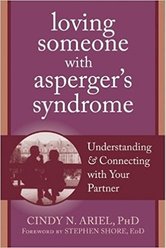 Both Loving Someone With Asperger’s , by Cindy N. Ariel, Ph.D and The Journal of Best Practices, by David Finch, reviewed in my last post, are about the topic of marriage between a neurotypical and an individual on the autism spectrum, but other than that similarity, the books could not be more different. While The Journal of Best Practices is a lighthearted, and distinctly readable memoir, Loving Someone With Asperger’s is really a handbook for understanding each other, communicating, and ultimately changing. The author, Cindy Ariel, is a psychologist with years of experience working with individuals on the spectrum, and that experience is reflected in the material she writes about. The book covers every conceivable topic, from communication, to anger, to emotional connection. Appropriately, it begins with a focus on the strengths of autism and what autism can bring to the relationship. This is important, because struggling couples so often focus on the differences between them, it can be healing to remember why the marriage began in the first place. Although I admire the book, I hesitate to recommend it. Any couple with the insight to examine their marriage to the depth and detail this book suggests is probably in a pretty solid relationship already. For those couples who are struggling, the introspection and self awareness the book requires is probably too much to expect a couple to reach independently. I do think this book would be an excellent adjunct to therapy. Along with the guidance and impartiality provided by a strong professional, many couples could use the workbook exercises to deepen and further their understanding and expectations for each other. The Journal of Best Practices: A Memoir of Marriage, Asperger Syndrome, and One Man's Quest to Be a Better Husband The Journal of Best Practices, A Memoir of Marriage, Asperger Syndrome, and One Man’s Quest to Be a Better Husband, by David Finch, is an entertaining and enlightening book. The author, upon realizing that his five year old marriage is in serious trouble, and learning that he has Asperger’s Syndrome, decides to methodically improve his marriage and be a better father as well. Finch starts out his quest by attempting to fix his autism, then realizes that the issue is in improving the marriage itself. Finch takes on this task in a detailed and methodical way, attempting to figure out the rules of the big picture by painstakingly noting the patterns around all the details. He comes up with a list of changes he can make, not really changes in himself, because it is clear that his wife already loves him, but more changes in how he treats his family.
I enjoyed the humor in the book, as well as Fitch’s unswerving honesty in looking at himself. He repeatedly moves from cluelessness, where he isn't meaning any harm, although he might be causing a great deal of it, to understanding. I think this is a key insight for neurotypical partners to come to, and a good reason for them to read this book. With a disorder that makes it difficult to impossible to understand one’s partner’s feelings, the inevitable misunderstandings are not deliberate. It can be a lot easier for a spouse to forgive an unintended harm. Because Finch really struggles to understand his wife's point of view, she remains quite a mystery to the reader as well. I found myself searching online after I finished the book to try to get a feel for her voice. At the same time, my experience of not knowing her is a useful sample in helping us neurotypicals understand for a moment what Finch experiences with his wife. Tthis book can also be useful for individuals on the spectrum. The idea of being a caring partner can be quite an abstract goal. In my practice, I always try to move from the abstract to the concrete, and examples are a great way to do so. The examples in this book take the abstract ideas about being a good husband and father and bring them to life in a more concrete and useful fashion. Marriage always involves compromise and adjusting for differences, and that’s even more true when one partner has a diagnosis, like autism, Asperger’s, or ADHD. In my therapy practice I work with many of these mixed couples, where it’s not just two different personalities, but also two different ways of experiencing and dealing with the world. These differences can bring a refreshing sense of novelty, perspective, and balance to a relationship, but they can also result in conflict, disappointment, and disconnect. Fortunately, understanding those differences between partners can be the first step in bringing a troubled relationship into one that’s supportive and satisfying for both. Gina’s Pera’s Is It You, Me, or Adult ADD? was written as a support group in book form, focused on the partners of adults with ADD or ADHD, and Pera uses the voices and examples of support group members throughout. But, don’t be fooled by the support group theme. This book is an extensive and well researched resource, covering not just anecdotal examples but also thoroughly detailing treatment options, historical background and professional discussions of ADHD. I always appreciate writing that’s easy to read while still being informative and professionally referenced. This book will serve as a useful long term reference as well as a book to read through.
I read some reviews criticizing Is It You, Me, or Adult ADD? for siding with the non-ADHD partner and blaming all the marital problems on ADHD and the ADHD partner. Although I think this can be a fair criticism in general, the book really isn’t directed at those couples where ADHD is bringing creativity and spontaneity to the marriage. People attend support groups because they need support with problems and they pick up a book like this because there’s something wrong in their relationship. It’s reasonable to address the problems the diagnosis brings in these cases. Is It You, Me, or Adult ADD? is an excellent resource for couples dealing with ADHD and I recommend it highly. Simon Baron-Cohen is a top autism researcher, and the author of numerous publications and several books. I find that his ease with explaining complex topics makes him especially easy to understand. (And, his publications are available on his webpage, which means those of us not connected to universities have access to his information. Thank you!) Dr. Baron-Cohen’s famous book,The Essential Difference: Male And Female Brains And The Truth About Autismdiscusses the differences between male and female brains and the idea that autism is an extreme male brain. In his new book, The Science of Evil: On Empathy and the Origins of Cruelty Baron Cohen discusses his theory that evil results from a lack of empathy. I haven’t read the book yet, however I listen to a fascinating interview with Dr. Baron-Cohen on NPR’s Science Friday, entitled, "Could a Lack of Empathy Explain Cruelty?" Baron Cohen discussed how a lack of empathy could lead to evil acts in some individuals as well as a withdrawal from socializing in other individuals, such as those with autism. The book is well reviewed and the interview is available on NPR.
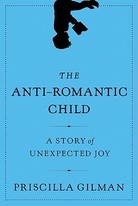 There are a lot of books written by mothers about raising their special needs children, some excellent, some not so great, most somewhere in the middle. The Anti-Romantic Child, A Story of Unexpected Joy , by Priscilla Gilman is both beautifully written, inspiring and dramatic, and also a bit different than the other books in this genre. That’s due to the author, who is not only a mother, but also a former professor of English literature. Gilman weaves together her interest in Wordworth’s poetry with her experiences in raising her special needs son in a way that brings deeper meaning to both. The Anti-Romantic Child is about Gilman’s son Benj, a boy exhibiting hyperlexia, as well as autistic characteristics, such as rigid behaviors and deficits in social skills. Hyperlexia is characterized by interest in words and exceptional reading skills along with difficulty with reading comprehension. Hyperlexic individuals frequently have social problems and other developmental delays. Gilman carefully discusses the unusual issues her son has, such as sensory sensitivities, and a tendency toward OCD and rigid behavior, without ever putting him into a labelled box. What makes Gilman’s book so fascinating is how she uses the abstract and ambiguous natures of poetry to further her own understanding of her son’s development. Because Gilman was a literature professor, she has a skill in presenting the poetry in a way that enhances the understanding of both the developmental issues and the poetry. Since I was trained as an engineer, with MIT’s minimal literature requirements, I’ve rarely had that experience. Like all the mother/authors I’ve read, Gilman has great dreams for her son, and fights to help him attain them. The difference in this book is the eloquence of how she expresses these dreams for Benj: “That he be seen as whole against the sky. That he not suffer beyond his and my capacity to bear it. That he be allowed to enjoy the pleasures of 'his own private nook' and come out of that nook for joyful engagement with others. That he always hold on to his visionary gleam, his bright radiance.” This book has a bright radiance all its own. 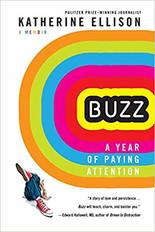 “Well written, compassionate, interesting” are all words I’d use to describe Buzz, A Year of Paying Attention, A Memoir by Katherine Ellison. But even though I enjoyed it, I struggled with the concept of the book and came away feeling vaguely unsettled. Ellison describes her plan to devote a year in which she’d “put other work aside, making it my full-time job to seek the best path for a distracted parent intent on helping her distracted child.” I always appreciate well written books that combine information with a chance to really get to know the author’s experiences. Ellison, a Pulitzer Prize-winning journalist, has the ability and the connections to do just that. She meets experts such a Dr Russell Barkley, and authors like Dr Daniel Amen, and Blake Taylor. She quotes from Dr Ross Greene, Dr John Ratey and Dr. Edward Hallowell. (Greene and Hallowell even write blurbs for the for the book cover.) It’s not surprising that an author who describes herself as having ADHD would take a creative and enthusiastic approach to exploring the different ways to manage ADHD. But it was also not surprising that this style resulted in a somewhat scattered attempt to solve a very challenging issue. I kept wanting more depth and focus, and I kept hoping the author would stick with something long enough to really give it a chance. I kept looking for more scientific inquiry and less anecdotal evidence. So often I hear from parents that they’re looking for a clear cut diagnosis, with a solid recommendation on what to do to help their child. Unfortunately, it’s just not that straightforward. Although a one size fits all diagnosis and treatment plan might be comforting, it’s never going to work as well as something tailored specifically. There is no one path, or one best treatment, and dabbling in different solutions over the course of a year is not going to result in the best outcome. As for Buzz, I’d still recommend it, but I’d suggest thinking of the book as a chance to understand someone else’s experiences with a challenging child, not as a way to learn how to help your own child. |
Patricia Robinson MFT
I'm a licensed therapist in Danville, California and a coach for Asperger's and ADHD nationwide. I work with individuals of all ages who have special needs, like Autism Spectrum Disorders, ADD, ADHD, and the family members and partners of special needs individuals. Archives
February 2015
Categories
All
|
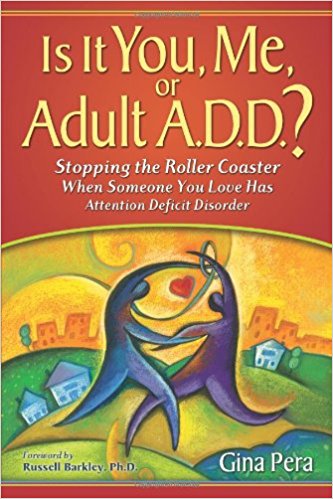
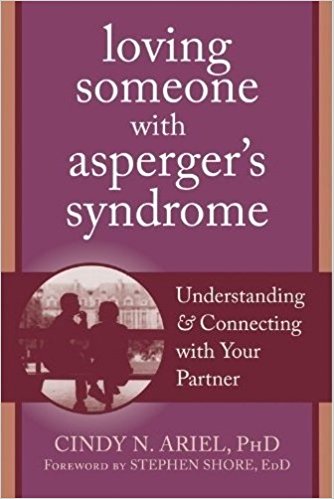
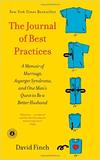
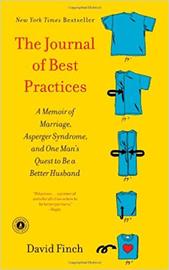
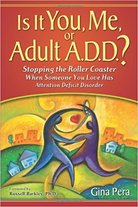
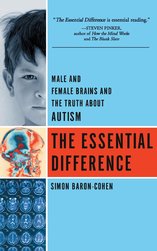
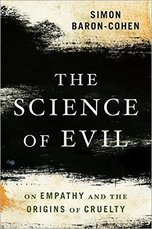

 RSS Feed
RSS Feed